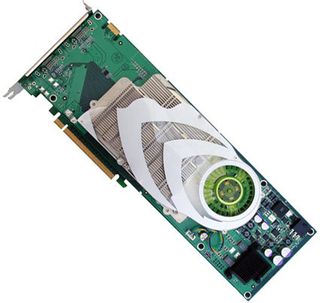Nvidia Goes For Four: Quad SLI Gaming Dissected
Introduction

Computer makers started with machines having single processors. In an effort to improve performance, they brought us dual processors, then multiple processors, and now multi-core processors have been implemented. Computer graphics has seen a similar progression. When 3Dfx released Scan Line Interleave (SLI) with its Voodoo series, consumers were introduced to the first round of multi-GPU configurations for more rendering horsepower.
Nvidia recently reinvented SLI as "Scalable Link Interface" with its GeForce 6 series. ATI responded a year later with CrossFire. Today we have the latest installment of parallel processing in the form of Quad SLI, which unites four graphics cores to increase overall rendering throughput for the sake of higher resolution and maximum visual quality.

Traditionally, the 3D rendering pipeline has been constrained by a maximum number of fixed objects, the number of instructions that shaders can compute within a certain time frame, and a plethora of issues that Microsoft's DirectX 9 cannot address. Until the first generation of DirectX 10 graphics cards and Microsoft's Windows Vista both hit the scene, throughput will be dictated by the same parameters. That being said, we have seen hardware vendors come up with faster and wider 3D solutions to maximize rendering throughput. Nvidia calls this XHD for Extreme High Definition, and Quad SLI does just that: provides maximum resolution with all of the eye candy turned on.
Join our discussion on this topic
Stay On the Cutting Edge: Get the Tom's Hardware Newsletter
Join the experts who read Tom's Hardware for the inside track on enthusiast PC tech news — and have for over 25 years. We'll send breaking news and in-depth reviews of CPUs, GPUs, AI, maker hardware and more straight to your inbox.
Most Popular



